Pests and diseases of crape myrtle are a challenge for gardeners who love these vibrant trees and shrubs. These problems can quickly compromise their beauty, affecting not only the flowers but also the overall health of your tree, from tiny aphids to powdery mildew. Understanding the most common pests and diseases and how to treat them naturally helps keep your crape myrtle thriving year after year.
If you want to learn more about general care for crape myrtles, including planting tips, pruning, and the best fertilizers, check out this comprehensive guide and my planting guide.
Table of Contents
Top 5 Pests That Target Crape Myrtle
Even the healthiest crape myrtle can fall victim to common garden pests. Recognizing the symptoms early is key to stopping infestations before they cause serious damage.
1. Aphids
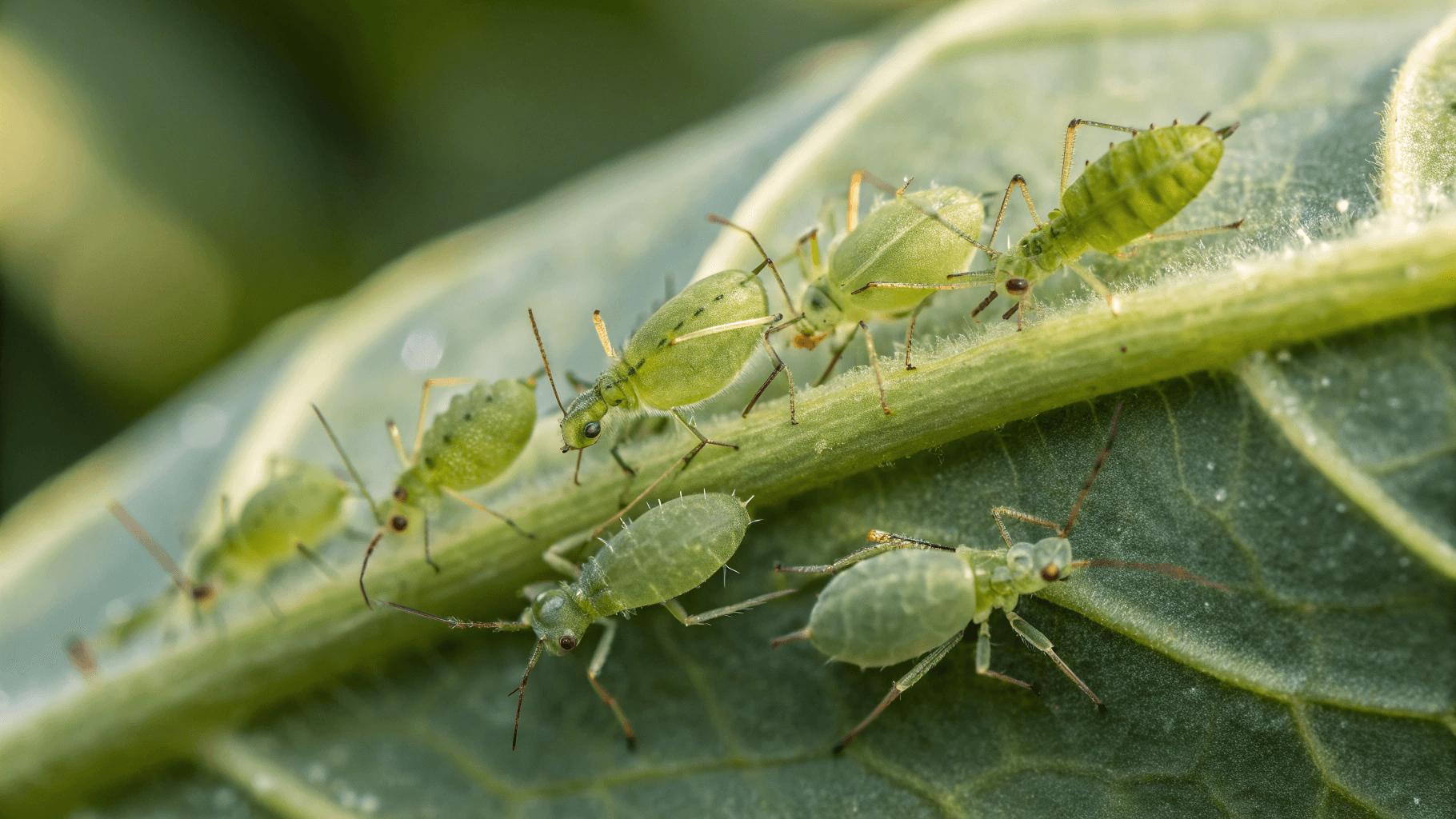
Symptoms & Damage:
Aphids are tiny, soft-bodied insects that cluster on new growth and flower buds. They suck the sap from leaves, causing curling, yellowing, and stunted growth. Heavy infestations can also produce sticky honeydew that encourages sooty mold growth.
Life Cycle:
Aphids reproduce rapidly in warm weather. Females give live birth without mating, meaning populations can explode in a matter of weeks.
Treatment:
Natural predators like ladybugs are effective. Spraying a mixture of water and mild horticultural soap can also reduce populations without harming beneficial insects.
2. Scale Insects
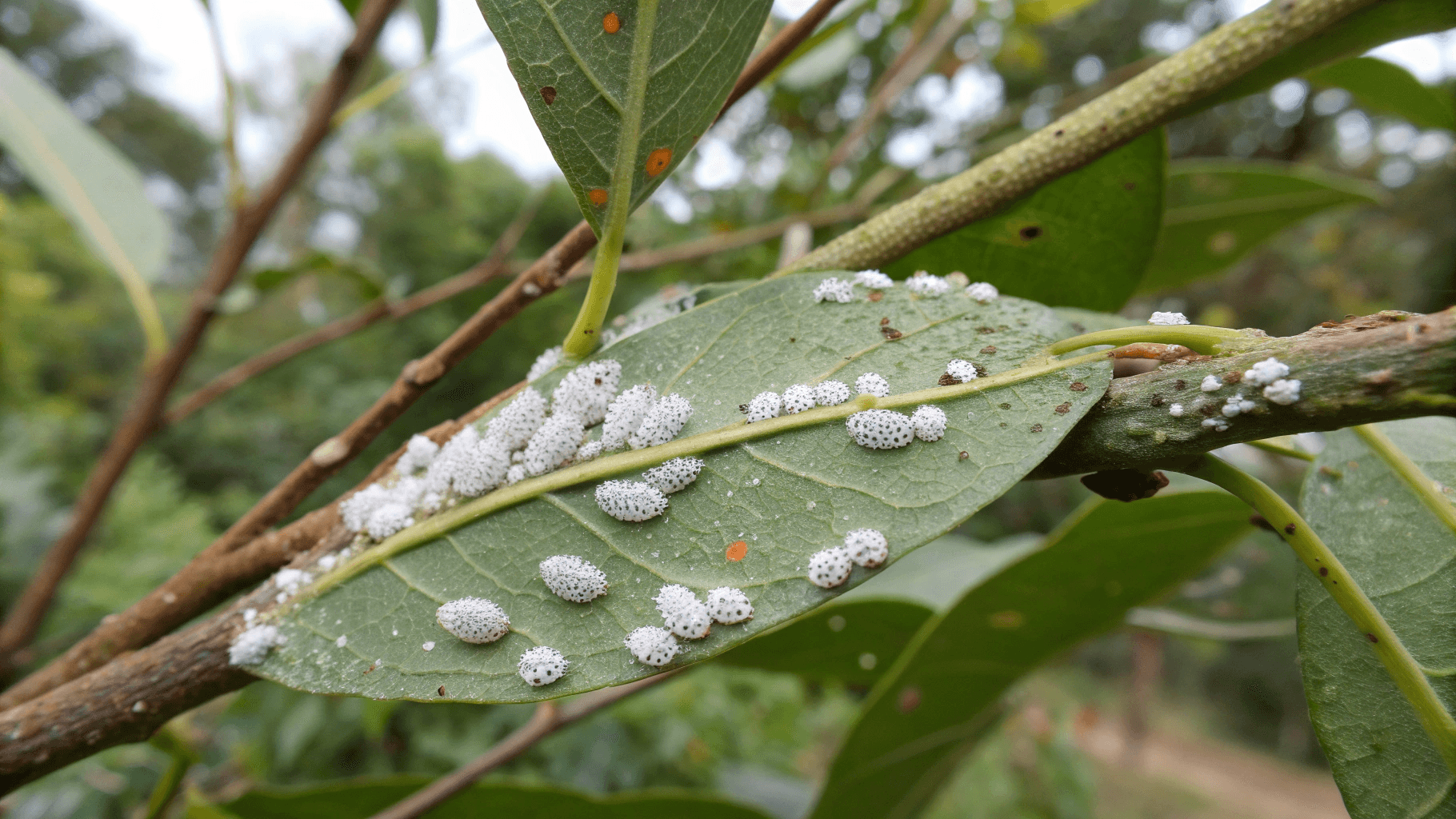
Symptoms & Damage:
Scale insects attach themselves to stems and branches, appearing as small, immobile bumps. They feed on sap, weakening the tree and leading to yellowing leaves or branch dieback.
Life Cycle:
Scales have a protective shell and can survive harsh conditions. They reproduce slowly but steadily, laying eggs under their protective covering.
Treatment:
Prune heavily infested branches, and apply neem oil or horticultural oil to suffocate them. Consistent monitoring is essential, as scales can hide in hard-to-reach areas.
3. Spider Mites
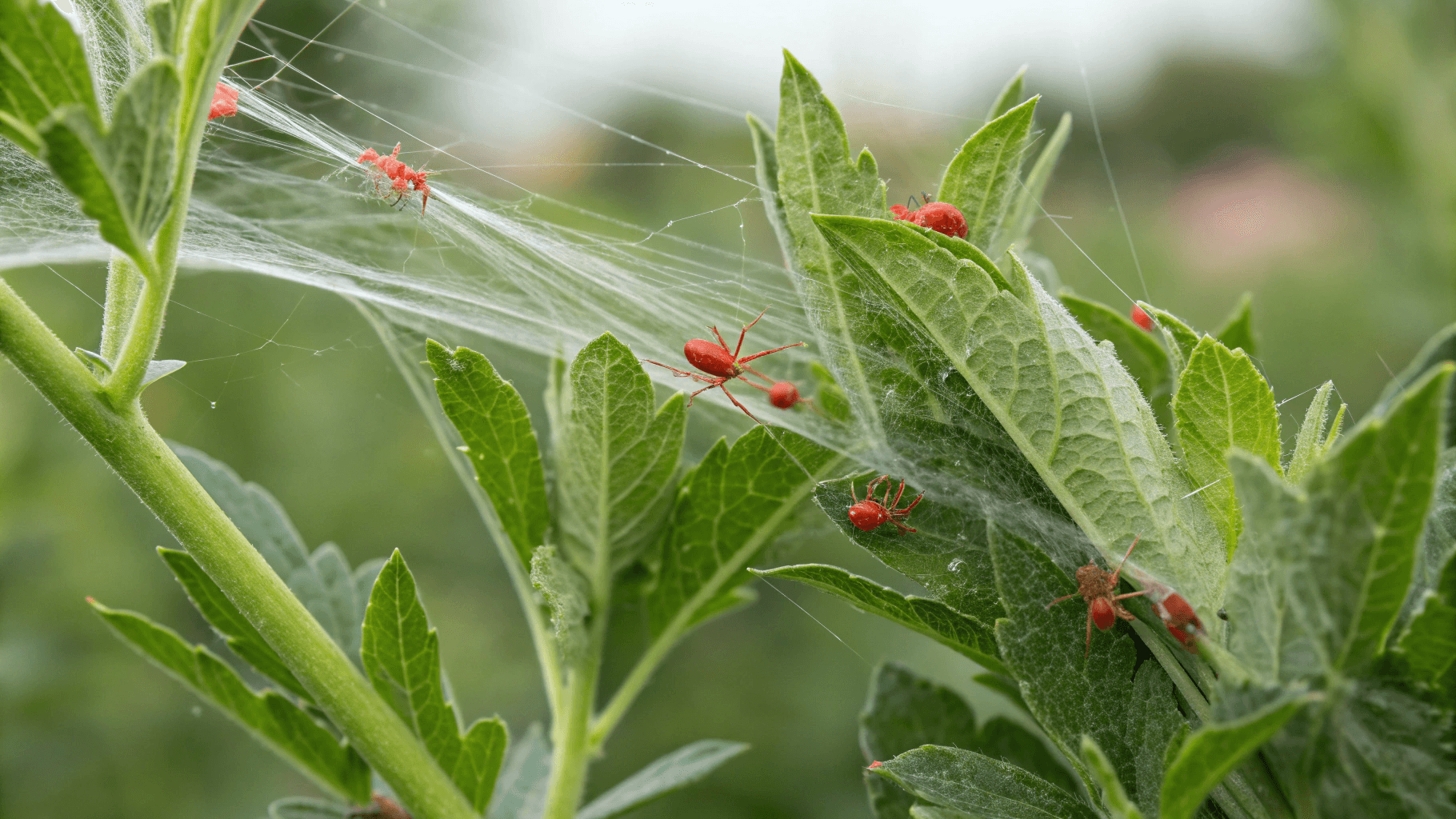
Symptoms & Damage:
These microscopic pests are hard to see with the naked eye, but their damage is obvious: leaves may appear stippled or bronze, and webbing can develop in severe cases.
Life Cycle:
Spider mites thrive in hot, dry weather, laying eggs on the undersides of leaves. Populations can double every week under ideal conditions.
Treatment:
A strong spray of water can knock them off leaves, while neem oil or insecticidal soap prevents reinfestation. Maintaining moisture in the soil can also discourage their spread.
4. Japanese Beetles
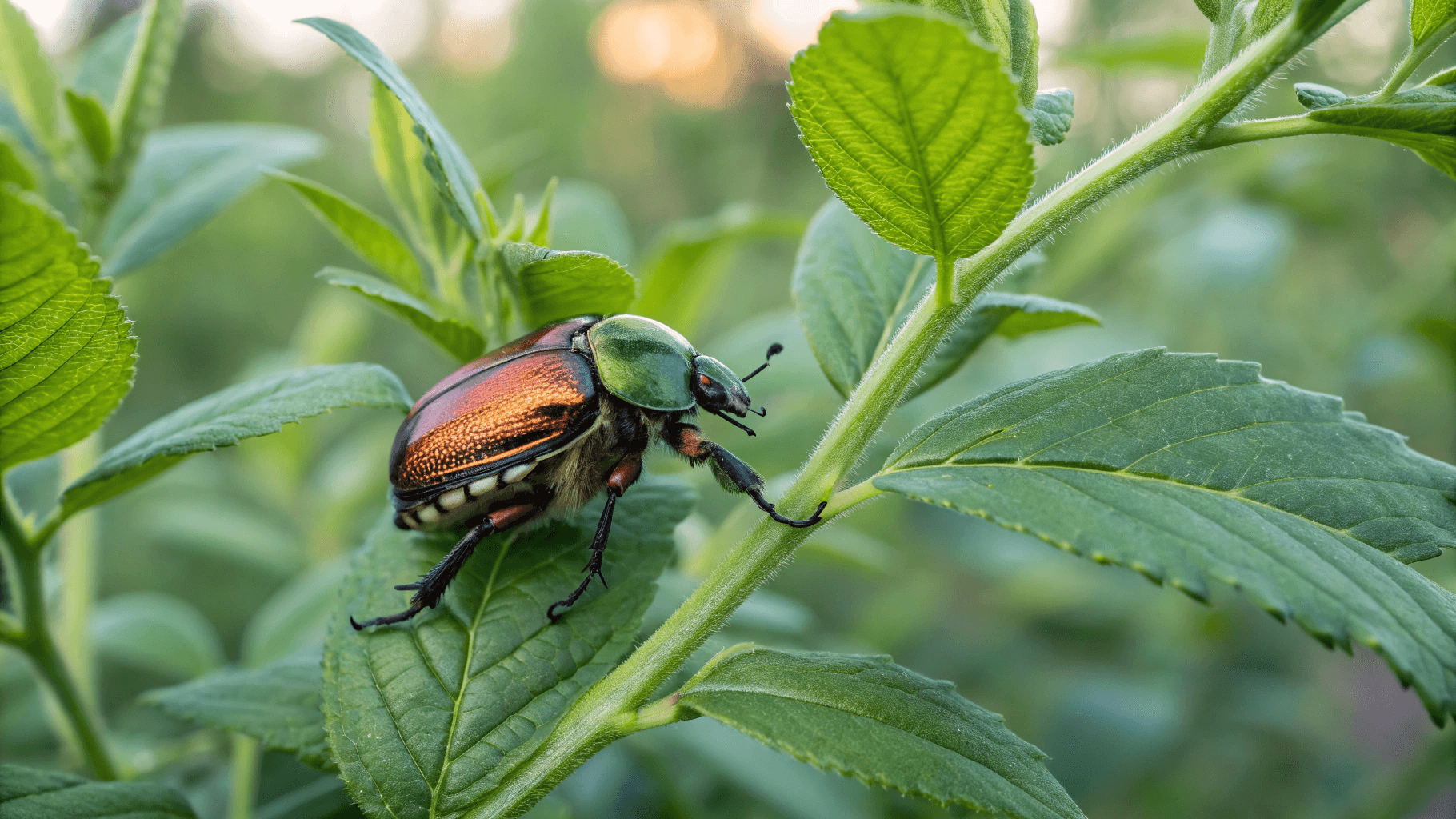
Symptoms & Damage:
These shiny beetles chew on leaves and flowers, often leaving a lace-like appearance. While the damage is mostly cosmetic, heavy infestations can stress the tree.
Life Cycle:
Adults emerge in mid-summer, feed for a few weeks, and lay eggs in the soil. The larvae, known as grubs, feed on grass roots.
Treatment:
Hand-picking beetles is surprisingly effective for small infestations. Neem oil can also reduce feeding and disrupt reproduction.
5. Caterpillars
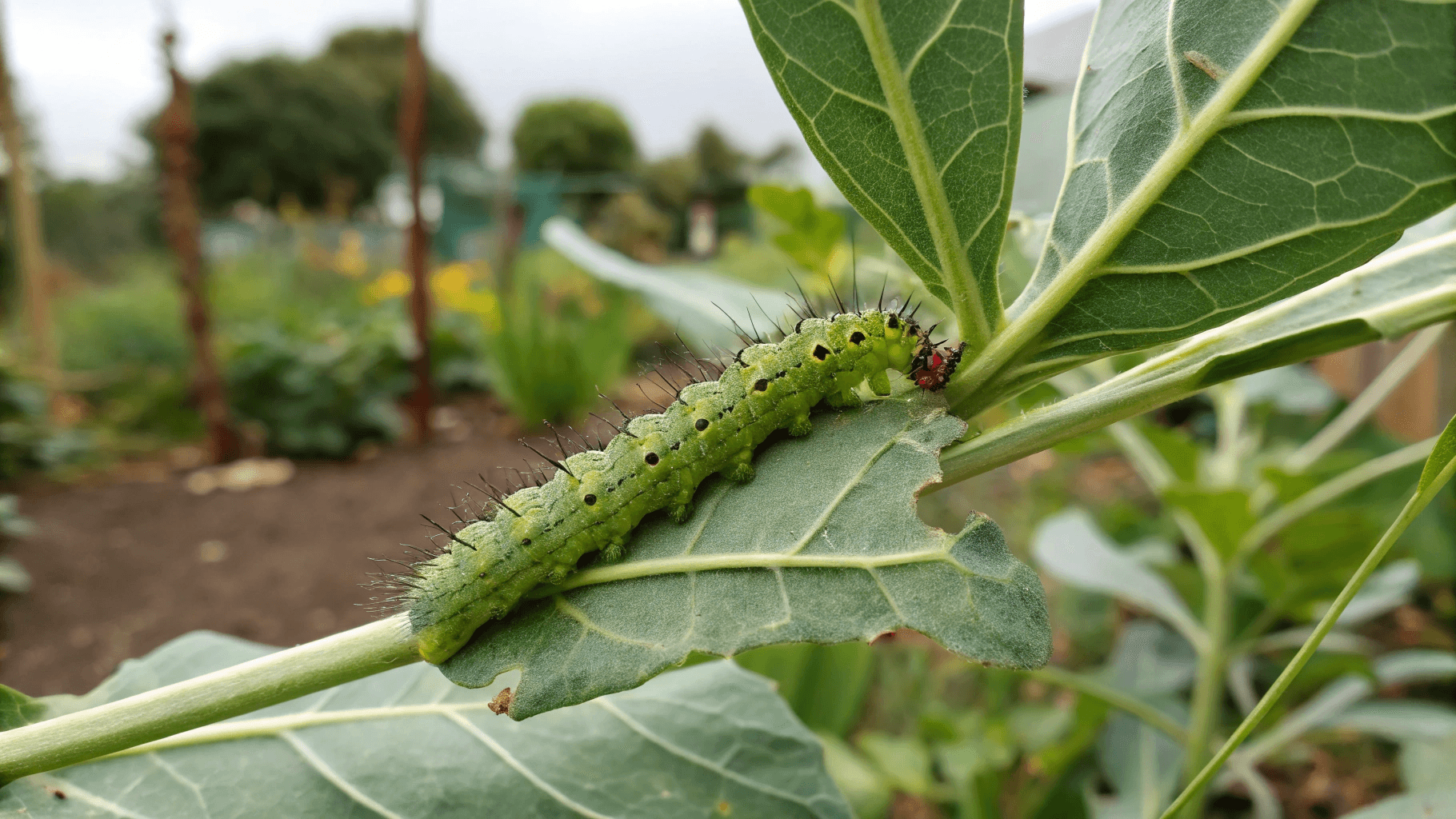
Symptoms & Damage:
Caterpillars, including the crape myrtle bark scale caterpillar, eat leaves, leaving holes or completely skeletonizing foliage.
Life Cycle:
Depending on the species, caterpillars may complete multiple generations in one growing season. They pupate in soil or bark crevices.
Treatment:
Bacillus thuringiensis (Bt) is a natural bacterial insecticide that targets caterpillars specifically, leaving beneficial insects unharmed. Manual removal can also help in smaller gardens.
Top 3 Diseases Affecting Crape Myrtle
Crape myrtles are generally hardy, but fungal diseases can create frustrating cosmetic issues or even threaten plant health.
1. Powdery Mildew
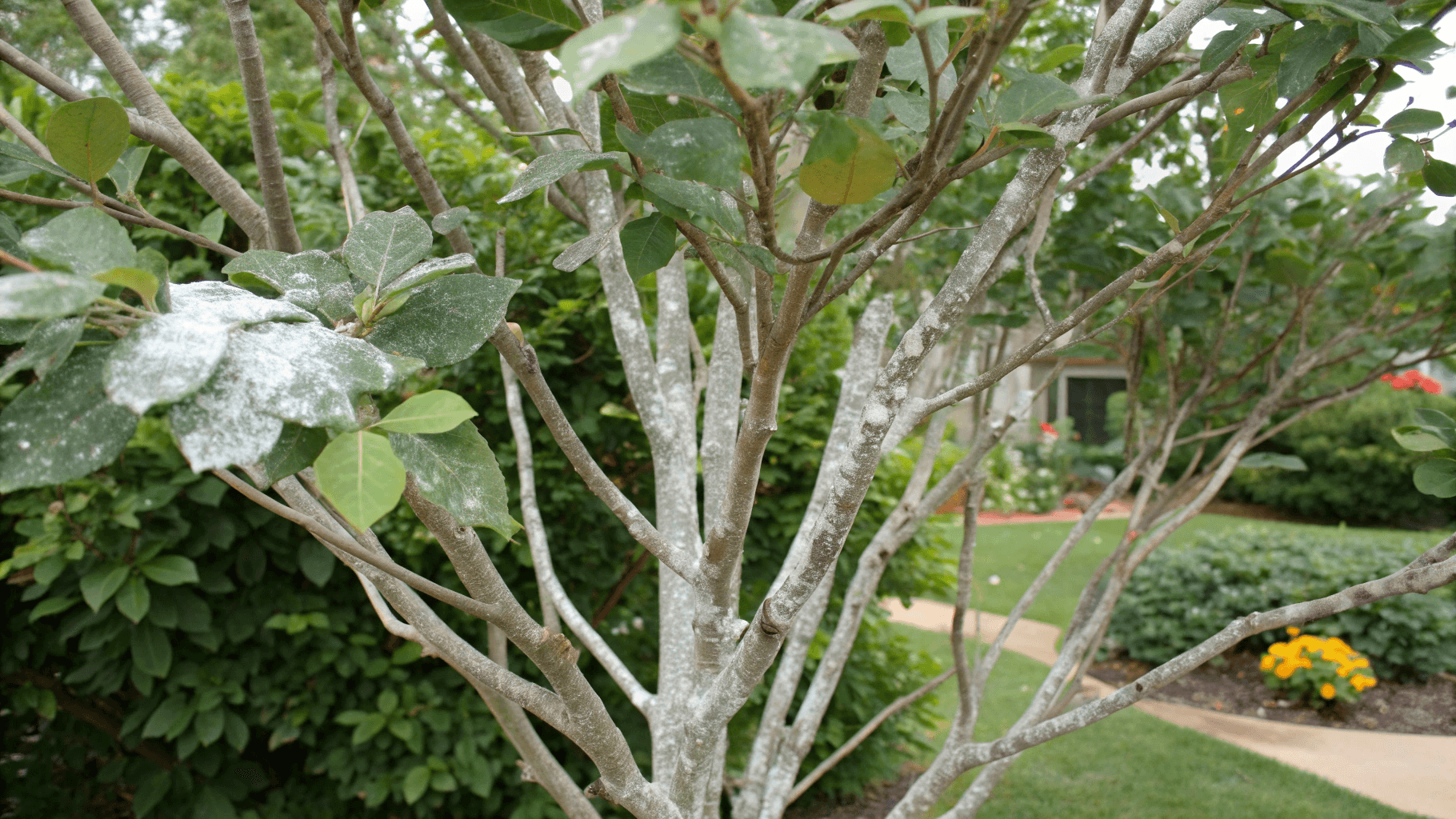
Causes & Symptoms:
Powdery mildew thrives in humid conditions and shaded areas. It appears as a white, powdery coating on leaves, buds, and stems. Infected leaves may curl, turn yellow, and drop prematurely.
Treatment:
Pruning for better air circulation helps prevent infection. Sulfur-based fungicides or neem oil can stop the spread, while maintaining healthy watering practices keeps plants resilient.
2. Sooty Mold
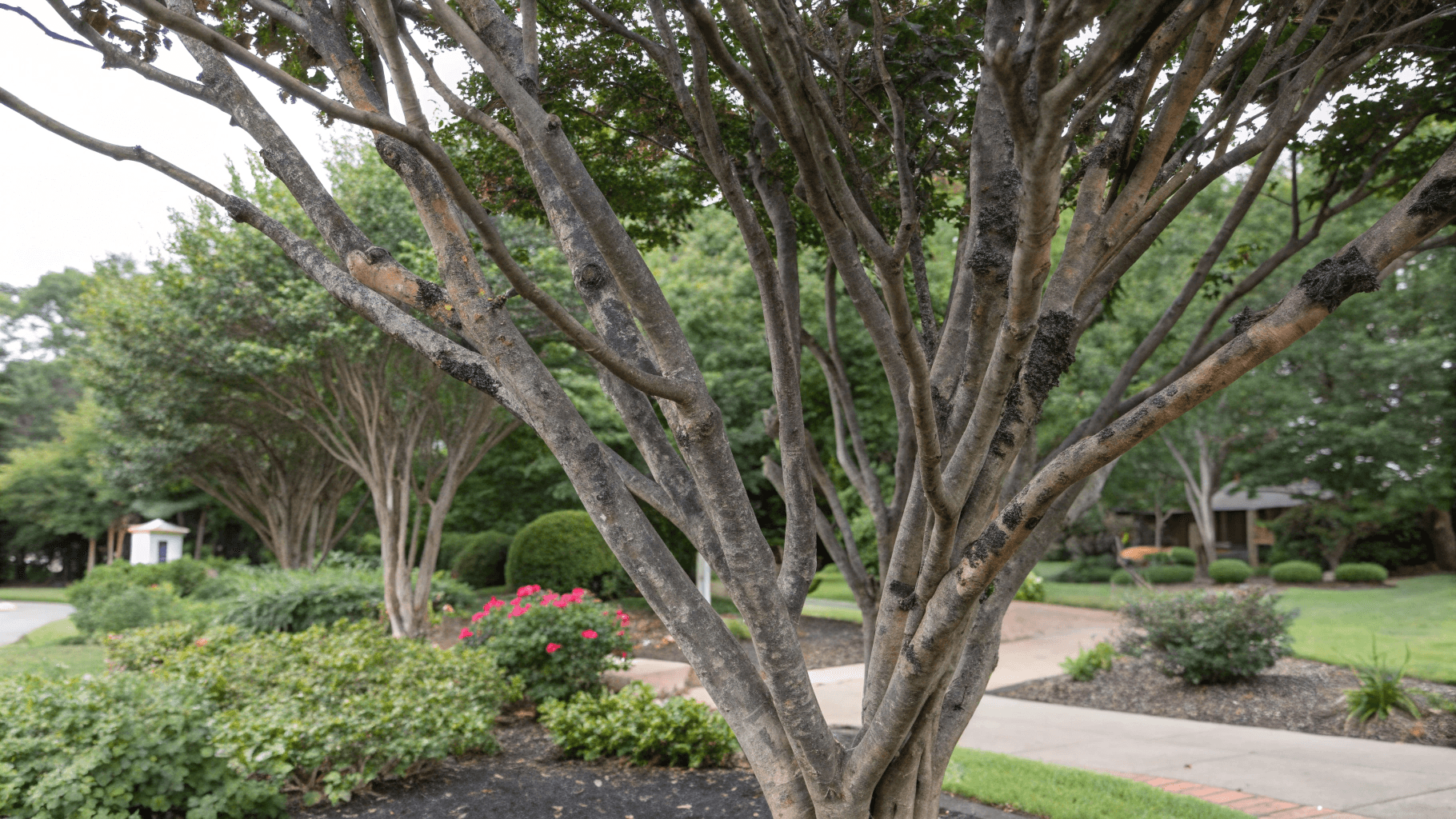
Causes & Symptoms:
Sooty mold isn’t a direct disease; it grows on honeydew excreted by pests like aphids and scale. It appears as a black, soot-like coating on leaves and branches, which can reduce photosynthesis and weaken the plant.
Treatment:
Controlling the underlying pests is the key. Wash affected leaves with water and a mild soap solution. Healthy pruning to improve airflow reduces fungal growth.
3. Leaf Spot
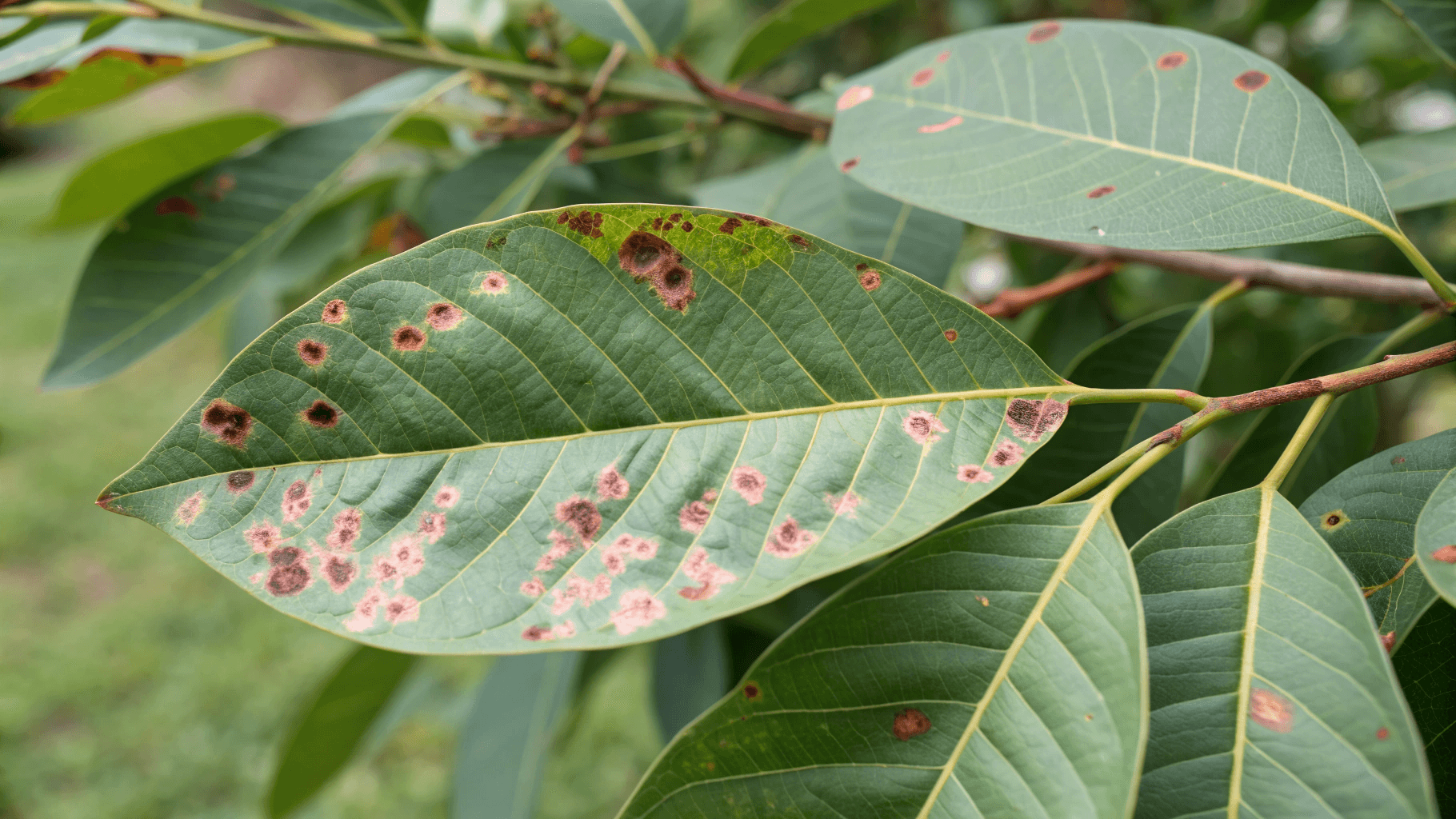
Causes & Symptoms:
Leaf spot fungi thrive in wet conditions, creating small dark spots on leaves that may eventually yellow and fall. Severe infestations can stress the tree, reducing flowering and vigor.
Treatment:
Remove and destroy infected leaves. Avoid overhead watering, and apply neem oil or a copper-based fungicide if the problem persists.
Organic Remedies for Pests and Diseases of Crape Myrtle
Gardening naturally is not only safer for the environment but also for pollinators and beneficial insects. Here are some effective treatments I recommended:
- Neem Oil: A broad-spectrum solution that acts as a pesticide and antifungal treatment. Spray leaves thoroughly every 7–14 days for best results.
- Insecticidal Soap: Works well for soft-bodied insects like aphids and mites. Apply during early morning or late evening to prevent leaf burn.
- Pruning: Removing diseased or infested branches improves airflow and prevents the spread of both pests and disease. Dispose of clippings carefully to avoid re-infestation.
- Companion Planting: Some herbs, like basil or marigolds, can repel pests naturally when planted nearby.
Preventative Measures Against Pests and Diseases of Crape Myrtle
Preventing problems is always better than treating them. Simple steps can reduce pest and disease issues:
- Good Air Circulation: Avoid overcrowding. Space plants to allow airflow, reducing humidity and fungal growth.
- Proper Pruning: Regular pruning not only shapes the tree but also removes potential disease and pest breeding grounds.
- Soil Health: Well-draining, nutrient-rich soil supports strong root systems and overall plant immunity.
- Watering: Water at the base to keep leaves dry and minimize fungal diseases.
- Monitor Regularly: Early detection of pests or disease symptoms allows for timely, natural treatment before the problem escalates.
When to Consider Chemical Treatments for Pests and Diseases of Crape Myrtle
While natural remedies work for most issues, severe infestations may require chemical intervention. Use Caution!
- Target only the affected areas.
- Follow label instructions carefully.
- Consider spot treatments rather than blanket spraying.
- Prioritize products that are less toxic to beneficial insects.
Chemical controls should be a last resort, not a routine solution. Often, a combination of proper care, pruning, and natural treatments will keep your crape myrtles thriving.
Conclusion
Crape myrtles are resilient, beautiful plants, but they do face threats from pests and diseases. By understanding the top offenders like aphids, scale, and powdery mildew, you can act quickly and naturally to protect your garden.
Regular monitoring, good cultural practices, and organic treatments like neem oil or horticultural soap can keep your crape myrtles healthy and blooming year after year.
For more detailed guidance on growing, pruning, and fertilizing crape myrtles, explore my full resources: pruning tips, planting guide, varieties for small yards, and fertilizer reviews.

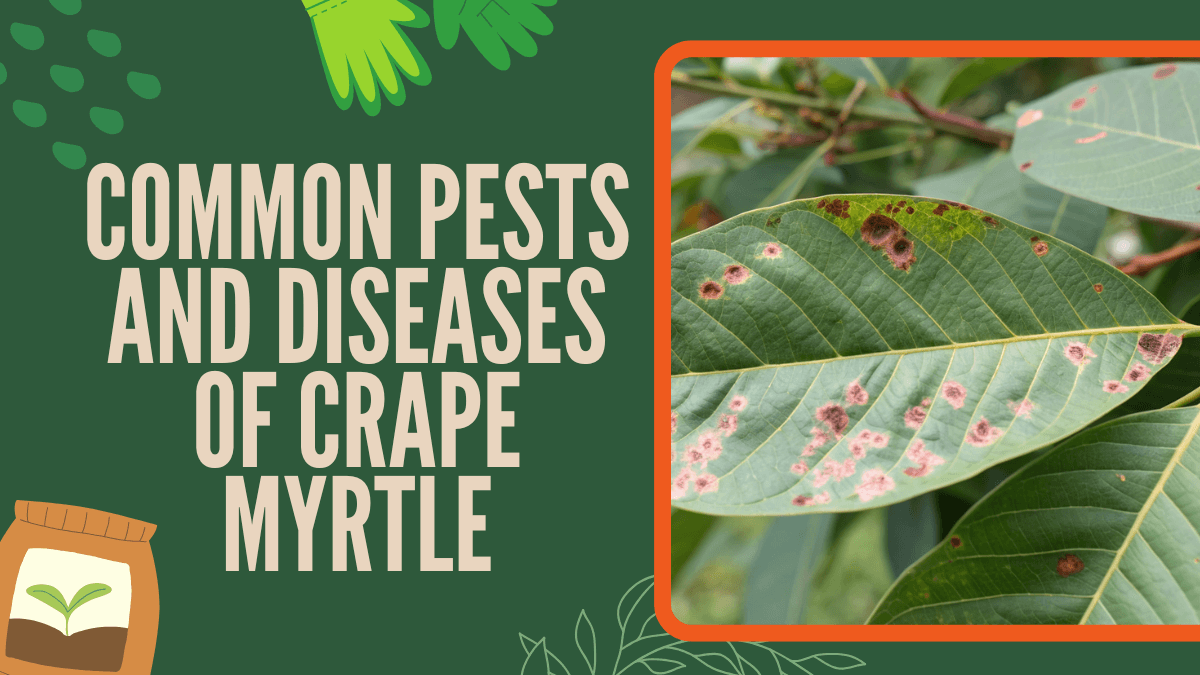
 ChatGPT
ChatGPT
 Perplexity
Perplexity
 Claude
Claude
Leave a Reply